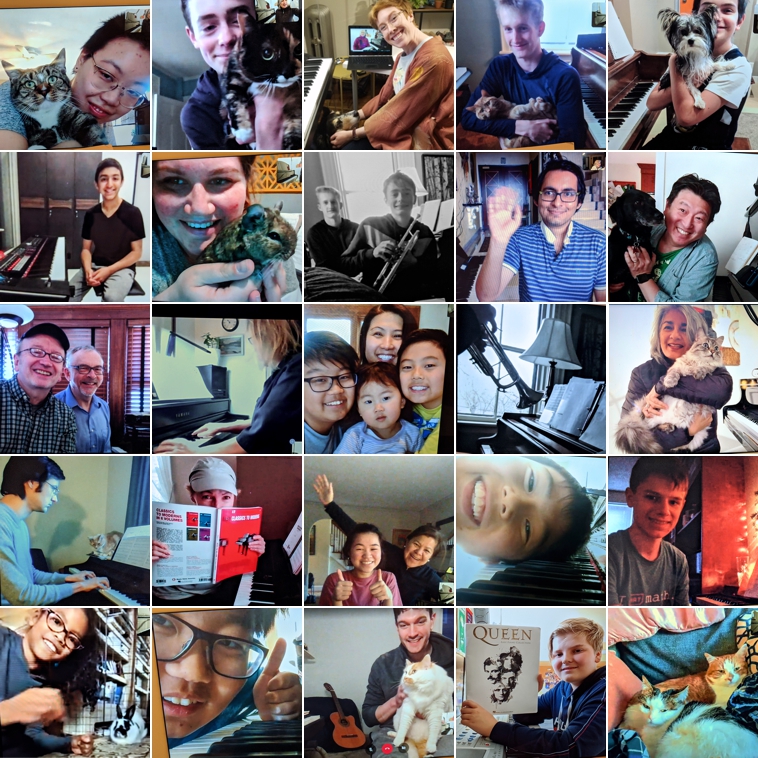Highlights from the livestream of our recent workshop finale performance at the studio, by some talented high school students. Thanks to all the young musicians who participated and offered our listeners a memorable afternoon of live music!
[More info on ongoing and future workshops]
I’ll Close My Eyes
Always heartwarming to see siblings practice and perform together. Here, high school senior Zachary (p) & his younger brother Nate Gillette (tpt) team up to perform the jazz standard “I’ll Close My Eyes”‘ (Billy Reid).
As part of his jazz studies with me, 15-yr old Nate (who also studies jazz piano) recently transcribed Blue Mitchell’s solo (Blues Moods, 1960) on the same tune:
Recorded and mixed in Cakewalk by BandLab at the Leitmotif Piano Studio.
Creating Counterpoint Using Guide Tones in Jazz Improvisation
This is the second of a two-part series on linear improvisation using guide tones in jazz. (I recommend viewing the first of the series ‘Creating Linear Connections Using Guide Tones in Jazz Improvisation‘ to maintain continuity). Although geared towards pianists, these principles can be adapted to other instruments as well. Here I’m demonstrating how to create a ‘double counterpoint’ or two melodies that complement and play off each other solely using the right hand. The technique used is similar to when playing polyphonic keyboard works by Bach and Handel.
Subscribe to my YouTube channel – LeitmotifMusic to stay updated for more videos and music!
Creating Linear Connections Using Guide Tones in Jazz Improvisation
This is the first of a two-part series on linear improvisation using guide tones in jazz. The ear naturally gravitates towards strong chord tones, and building around them will give your lines a stronger structure and shape. I’m using a common progression (Autumn Leaves, Theme from M*A*S*H) to demonstrate how guide tones (derived from harmony) can help you create beautiful, flowing lines. At 8:14 I demo and improvise over the four formulas that are discussed in this video.
Here is a link to Part II of this series “Creating Counterpoint Using Guide Tones in Jazz Improvisation“
Subscribe to my YouTube channel – LeitmotifMusic to stay updated for more videos and music!
Online piano lessons during social distancing
I began using Skype around 2005, the start of the video-chat revolution, mainly to keep in touch with family overseas. A couple of years later, I gave my first online lesson to a student in Israel who was interested in jazz improvisation. We used Skype and barring some poor connectivity issues at that time, the lessons went off extremely well. Teaching remote students is an important part of what I do at the studio and over the past decade I’ve got to know some wonderful, talented people across several continents. These days I use a variety of video conferencing apps, depending on preferences – Skype, Google Hangouts, Zoom and FaceTime.
So when the COVID-19 restrictions were announced, my in-studio students from the Boston area transitioned to online lessons, a process that happened with ease overnight. For fun, I took screenshots of some lessons during the first week of the ‘quarantine’. The bonus for me is that I get to meet not just the students, but often their families, and almost always a fur baby that likes to hang around at our lessons (including a bunny rabbit and Chilean degu!).
Here’s more information on online piano lessons, and if you’re interested in developing your classical piano or jazz improvisational skills further, send me a message.
